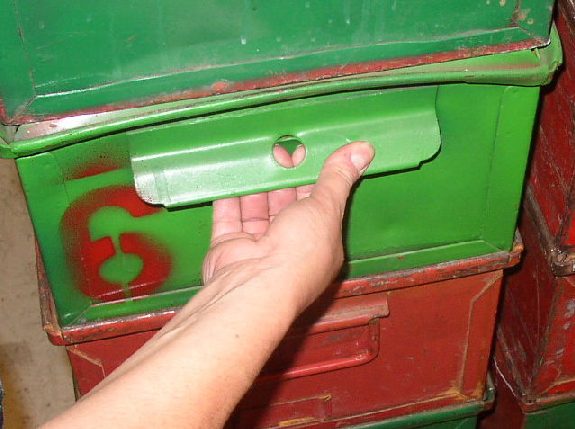 |
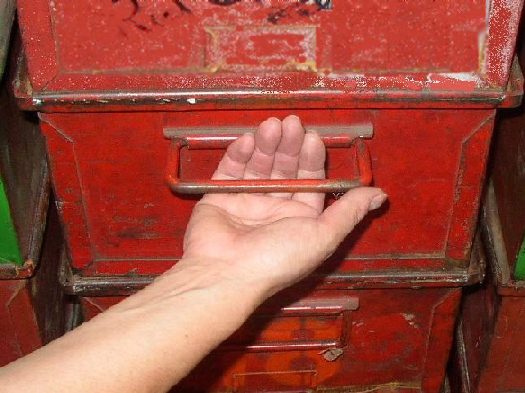 |
| Fingertip grip — hard to hold | Steel rod handhold — better but heavy pressure point |
Principles affected
Related pages
Material handling
Workstations
Background
There are several common problems with totes and trays:
- Inadequate handhold or complete absence of hand holds
- The weight of the contents is too heavy
- The totes/trays are too deep, making it hard to place or remove items.
- The totes/trays are stacked on floor or other hard-to-reach height.
Shop terminology varies widely by industry and facility, but a “tote” is generally a small container that can be lifted by hand. A “tray” is shallower than a “tote.”
Objectives
Minimize the need to lift or handle totes. Optimize the totes for easy handling, e.g. handholds that maximize strength and minimize contact stress.
Ideas and Options
Handholds
The photos at the top of this page show common problems with inadequate handholds, i.e. fingertip grip and contact stress from a thin metal handle.
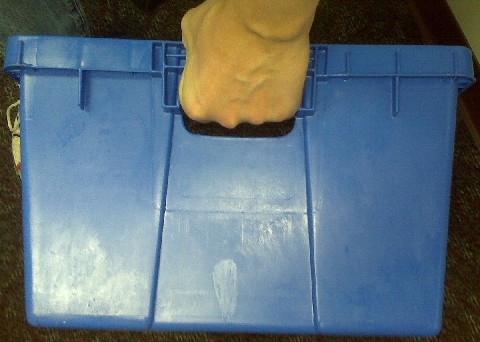 |
| Good handholds (www.mscdirect.com) |
Good handholds enable the full hand to be used in a power grip. Being able to wrap the hand around a grip, rather than lifting with the tips of the fingers, reduces the grip force dramatically, making it possible to lift the same weight with much less effort. Ideally, a grip should not have any hard edges or pressure points. It should be roughly one inch diameter or more, which also helps to reduce pressure points, plus helps reduce the grip force needed to hold the load. See formal guidelinesbelow.
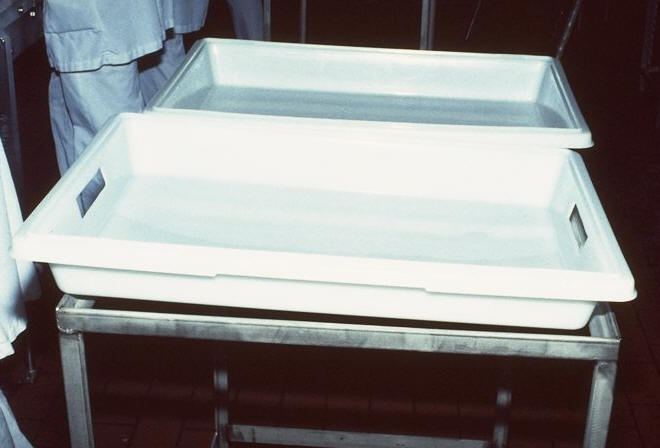 |
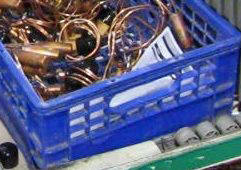 |
| Far tray has no handhold. Close tray has handhold, although with hard edge. | Adequate handhold, although with perhaps some contact stress from the edges. |
Size and weight
It is common for companies to establish weight limits for totes, such as 30 lbs. This practice can be satisfactory, but it does not take into account some important variables such as (a) the horizontal distance that the load is held away from the body, (b) the amount of bending that is required during the lift, and (c) the frequency of the lifts. See formal guidelines below.
A better strategy is to design methods and equipment to avoid the need to lift, rather than focusing on permissible weights. See slides, carts, conveyors, and lifts.
Depth
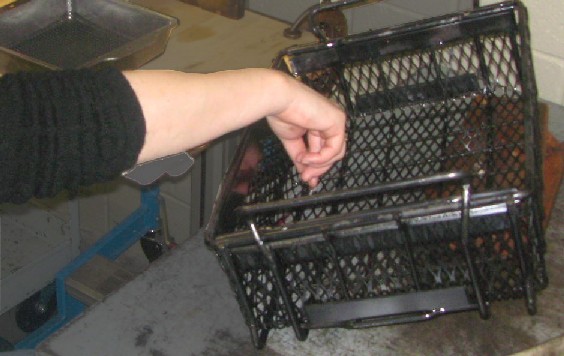 |
| Too deep for the small product |
On occasion, trays and totes can be too deep for the items held in the conveyor, which can create awkward wrist postures and clearance or contact stress conflicts with the hand and arm. Typically in this situation productivity is also reduced as employees either take extra time to place or reach the items or double handle the parts, staging them first then transferring.
Usually in these situations, the best solution is to replace the containers with more appropriately sized ones. Sometimes, however, adding a false bottom is adequate and less expensive.
Hand clearance
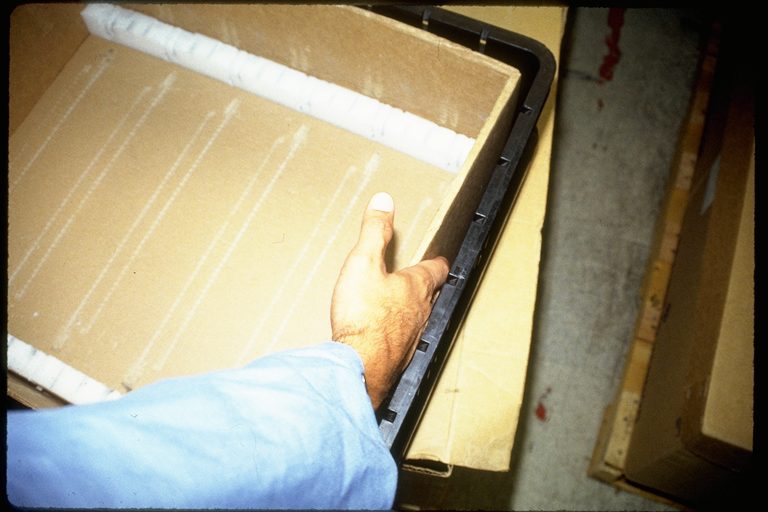 |
| Inadequate clearance to reach item inside a tote |
Hand clearance issues have been mentioned above regarding size of handholds and depth of the container. An additional issue is that items in the containers are too large or packed too tightly to be easily retrieved. Probably the easiest resolution is to obtain a better match between the container and the items, but other options can be used, such as inserting a cord or strap under the items before being packed. The cord or strap can then be pulled to eject at least some items to create space for fingers and hands.
Formal guidelines
The Lifting Guide developed by the National Institute for Occupational Safety and Health (NIOSH) provides recommendations regarding tote design and weight. See www.cdc.gov/niosh/docs/94-110.
Handholds:
- An optimal handle size has 0.75 – 1.5 inches (1.9 to 3.8 cm) diameter, ≥4.5 inches (11.5 cm) length, 2 inches (5 cm) clearance, cylindrical shape, and a smooth, non-slip surface.
- An optimal hand-hold cut-out has the following approximate characteristics: ≥1.5 inch (3.8 cm) height, 4.5 inch (11.5 cm length, semi-oval shape, ≥0.25 inches (0.6) cm container thickness (e.g., double thickness cardboard).
Tote size:
- An optimal container design has ≤16 inches (40 cm) frontal length, ≤12 inches (30 cm) height, and a smooth non-slip surface.
Acceptable weight:
The guideline does not specify a single weight that is appropriate in all circumstances; instead it provides a formula takes into account several variables, i.e., horizontal distance to the load, vertical height, vertical distance traveled, twisting, frequency of the lift, and duration of the task. Thus, the recommended weight limit depends on the situation. In instances where there is frequent lifting that involves bending and a long reach, 10 lbs. may be excessive. On the other hand, if the load is held close to the body when standing upright and the lift is infrequent, it may be acceptable to lift 50 lbs. or even more.
To reemphasize a previous comment, rather than reducing the weight of a filled tote, often a better strategy fis to improve the overall handling system to eliminate the need to lift. Multiple examples are provided throughout this website on how to achieve better methods that simultaneously improve efficiency and reduce risk of injury.
Tote handling technique
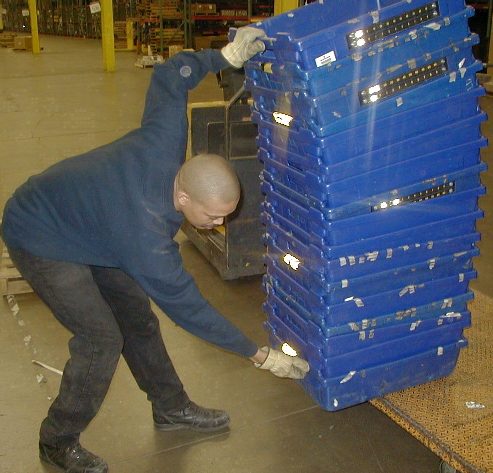 |
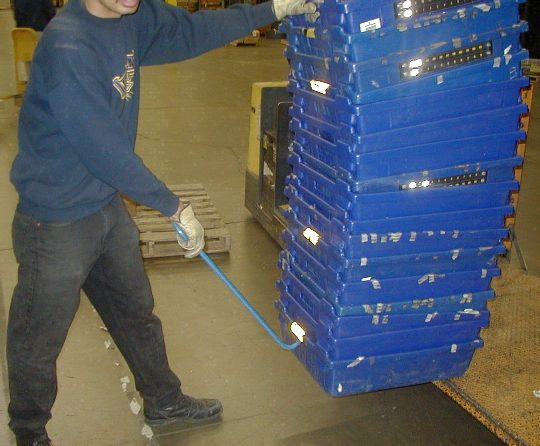 |
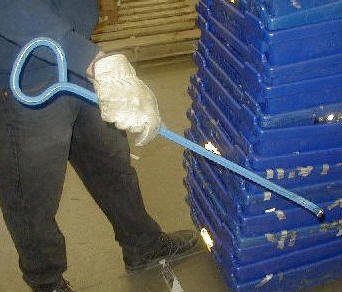 |
| Before — bending to lift | After — long hook | After — closer view of hook |
As a final comment, the sequence of photos above demonstrate an admirable technique for manual handling of quantities of empty totes. Often, stacks of totes are handled with mechanical equipment. But occasionally, manual handling is necessary, which creates a temptation to lift and push using poor methods, such as that demonstrated above left. However, in this instance, a creative employee used a long hook to help transfer stacks of totes from a work platform (center) and then drag along the floor. Mechanical equipment is probably better, but the simple hook is a good improvement by itself.
